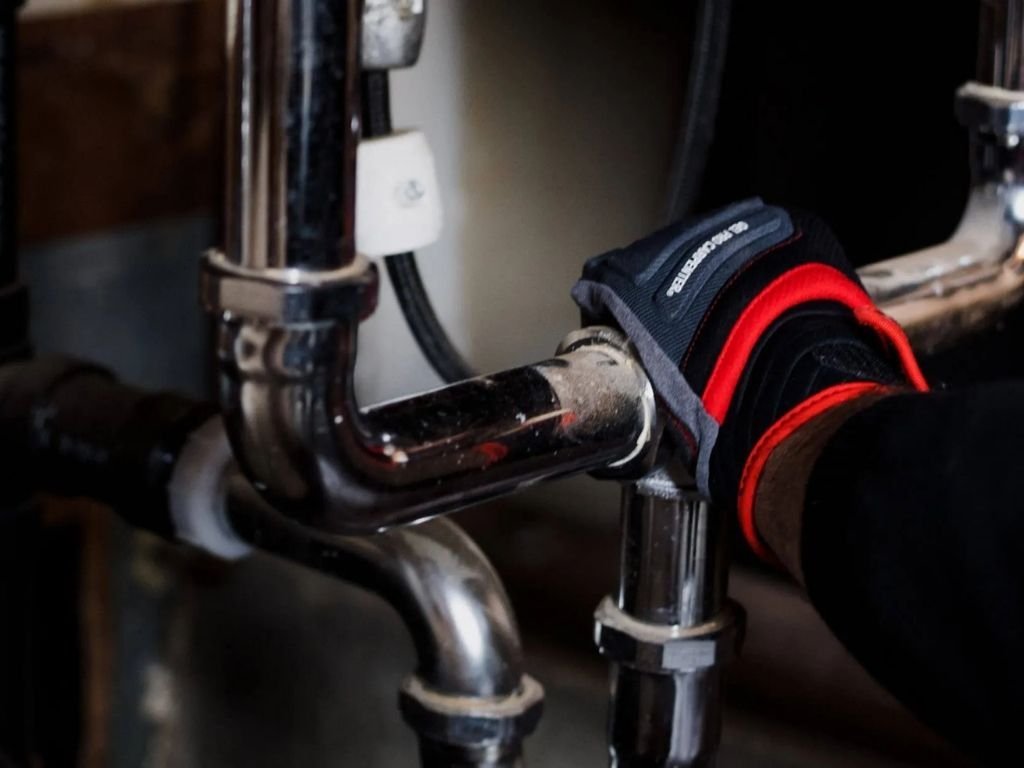Regular plumbing maintenance isn’t just about preventing emergencies—it’s about protecting your investment and saving money over time. At Lanham’s Plumbing, we’ve seen countless situations where simple preventative measures could have saved homeowners thousands in emergency repairs and water damage restoration. Here are seven professional maintenance tips that will help extend the life of your plumbing system and reduce your long-term costs.
1. Learn the Location of Your Main Water Shut-Off Valve
This might seem basic, but it’s surprising how many homeowners don’t know where their main water shut-off valve is located. In a plumbing emergency, quickly shutting off your water supply can be the difference between a minor inconvenience and catastrophic water damage.
Action Item: Locate your valve today (typically near where the main line enters your home, in the basement, crawl space, or near your water meter), make sure it operates smoothly, and ensure everyone in your household knows its location. Tag it with a bright label if needed.
2. Regularly Check for Silent Leaks
Even minor leaks can waste thousands of gallons of water annually while gradually causing structural damage and mold growth. Many leaks occur in places you don’t regularly see, allowing problems to worsen undetected.
DIY Inspection Tips:
- Check under sinks for moisture or water stains
- Look for discoloration on walls and ceilings
- Monitor your water bill for unexpected increases
- Conduct a toilet leak test using food coloring in the tank
- Check washing machine hoses for bulging or cracking
Catching leaks early typically means simpler, less expensive repairs and prevents collateral damage to your home.
3. Install Water Leak Detection Devices
Modern technology offers affordable ways to detect leaks before they cause significant damage. Simple battery-operated detectors can be placed near water heaters, washing machines, and under sinks to alert you when moisture is present. More sophisticated systems can automatically shut off your water supply when leaks are detected.
Investment Perspective: A $50-200 investment in leak detection technology can prevent thousands in water damage repairs.
4. Never Ignore Slow Drains
Slow drains aren’t just annoying—they’re warning signs of accumulating blockages that can eventually lead to complete clogs or even pipe damage. When multiple drains are slow, the issue may lie in your main sewer line, which requires immediate professional attention.
Preventative Measures:
- Use drain strainers in all sinks and showers
- Avoid disposing of grease, coffee grounds, and fibrous foods down kitchen drains
- Periodically flush drains with hot water
- Consider professional drain cleaning service annually for problem-prone areas
5. Maintain Your Water Heater
Water heaters typically account for about 18% of your home’s energy usage. Proper maintenance improves efficiency and extends service life.
Annual Maintenance Checklist:
- Flush the tank to remove sediment buildup
- Check the anode rod and replace if significantly corroded
- Test the temperature-pressure relief valve
- Inspect connections for leaks
- Confirm temperature setting (120°F is recommended for efficiency and safety)
Cost Savings: Regular maintenance can extend water heater life by 3-5 years and improve efficiency by up to 15%.
6. Protect Your Pipes From Freezing
Frozen pipe repairs and resulting water damage can cost thousands of dollars. Preventative measures are simple and inexpensive by comparison.
Winter Preparation:
- Insulate exposed pipes in unheated areas
- Seal air leaks near plumbing
- Disconnect and drain outdoor hoses
- Maintain consistent indoor temperatures
- Allow faucets to drip during extreme cold
- Open cabinet doors to allow warm air to reach pipes under sinks
7. Schedule Professional Plumbing Inspections
While DIY maintenance is valuable, nothing replaces a comprehensive inspection by a licensed plumber. Professional inspections can identify potential issues invisible to untrained eyes, from early signs of pipe corrosion to improper venting.
Recommended Schedule: Annual inspections for homes over 10 years old; every two years for newer homes.
What Professionals Check:
- Water pressure (excessive pressure accelerates wear on pipes and fixtures)
- Pipe condition and joints
- Water heater performance and safety
- Sewer line condition via camera inspection
- Fixture operation and efficiency
- Sump pump functionality
- Backflow prevention devices
The Bottom Line: Prevention Pays Off
The average emergency plumbing repair costs between $250-800, while major issues like sewer line replacements or water damage restoration can run into thousands. In contrast, most preventative maintenance measures cost very little but provide significant protection for your home and wallet.
At Lanham’s Plumbing, we offer comprehensive maintenance plans tailored to your home’s specific needs. Contact us today to learn how our preventative approach can help you avoid costly emergencies while extending the life of your plumbing system!

